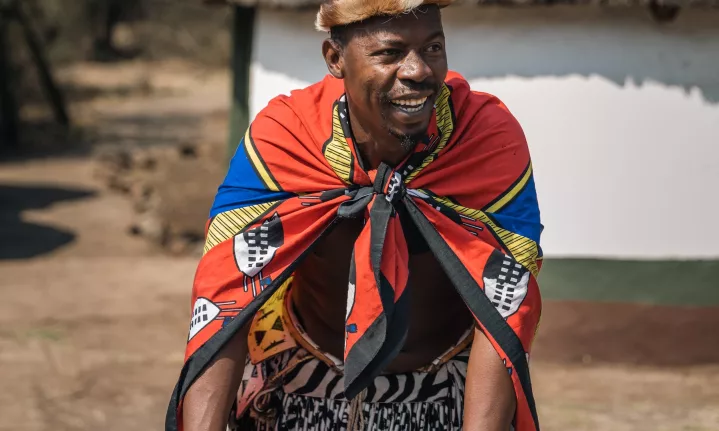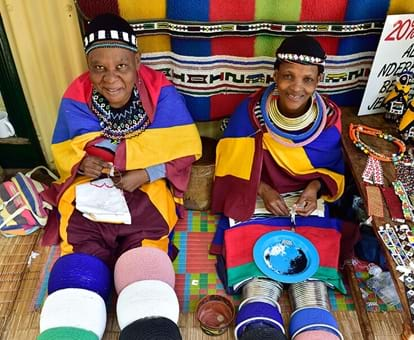The 5-Minute Rule for South African Culture Today
Table of Contents6 Easy Facts About South African Culture Today DescribedSome Known Details About South African Culture Today Fascination About South African Culture TodayThe Only Guide to South African Culture TodayThe 10-Minute Rule for South African Culture TodaySouth African Culture Today for Beginners
A matter of significance in Zambian villages is the passing away of liked ones. All participants of the village put cash, time and effort with each other for the funeral of the deceased.Music and dancing is a really essential aspect of the Zambian society. The different tribal devices have their own dance types; however, makishi is common amongst all tribes.
Not known Facts About South African Culture Today
When it comes to songs, drums are used one of the most, with a range of drumming events. In Zambia, bulk of individuals are Christian; Protestant and Roman Catholic. There are little teams of Muslims and Hindus, with the remainder adhering to neighborhood indigenous tribal ideas.

South African heritage and culture is profoundly diverse, and consists of several various groups of individuals who each have their very own traditions and beliefs. Having such a diversity of people and societies is what makes South Africa so distinct. In the true sense of the expression, we are a rainbow nation.
Making it the 7th on the list of countries with the most Portuguese individuals in it outside of Portugal. Portuguese is not only a society, but it is additionally a language and a citizenship. Portuguese individuals originate from the country of Portugal in Europe, however, due to Portugal (like several other nations in Europe) checking out the globe and conquering various other nations throughout the 15th 20th centuries, South Africa has what we call Portuguese South African's living in it.
The Facts About South African Culture Today Uncovered
Among the popular features of the topography is a plateau that covers almost 2 thirds of the facility of the country. The plateau facility rises toward the southeast, where it climaxes in the Drakensberg variety, component of a cliff that divides the plateau from the seaside areas. The Drakensburg includes Champagne Castle, the highest possible optimal in the nation.
The area north of the Witwatersrand, called the bushveld, inclines downward from east to west towards the Limpopo River, which develops the international border. The western section of the plateau, the middleveld, likewise comes down towards the west and differs in elevation between the highveld and bushveld. Between the Drakensburg and the eastern and southern shoreline, the land comes down to the sea.
Nearer the shore there is a low-lying level called the eastern lowveld. Southwest of the plateau the nation ends up being considerably a lot more dry, paving the way to the stony desert of the Great Karroo, bordered on the eastern by the lower, much better watered plateau of the Little Karroo. Separating the completely dry southerly inside from the sandy littoral of the southerly coastline and West Cape is another variety, the Langeberg.
South African Culture Today - The Facts
The country's racially, ethnically, and politically separated history has created national and subnational icons that still operate as signs of the country, and others signs that are accepted just by particular groups. The monuments to white inhabitant occupation and political supremacy, such as the Afrikaner Voortrekker ("leader") Monument in Pretoria and the Rhodes Monolith recognizing the British colonial realm builder and Cape prime priest Cecil Rhodes, continue to be sectarian signs.
The initial contemporary citizens were the San ("bushman") hunter-gatherers and the Khoi ("Hottentot") peoples, that herded animals (South African culture today). The San may have been present for hundreds of years and left proof of their visibility in countless ancient cave paintings ("rock art"). Bantu-speaking clans that were the ancestors of the Nguni (today's amaZulu, amaXhosa, amaSwazi, and vaTsonga individuals) and Tswana-Sotho language groups (today's Batswana and Southern and Northern Basotho) migrated below east Africa as very early as the fifteenth century

Both former republics of the Orange Free State and Transvaal (South African Republic) were established by Afrikaner settlers that beat and dispossessed the Basotho and Batswana. Lesotho would have been forcibly integrated right into the Orange Free State without the extension of British protection in 1869. The supreme unification of the country resulted from the South African Battle (18991902) between the British and the 2 Afrikaner republics, which minimized the nation to wreck at the beginning of the twentieth century.
Afrikaners traditionally considered themselves the just real South Africans and, while giving full citizenship to all homeowners of European descent, denied that status to individuals of shade up until the democratic shift of 1994. British South Africans maintain a feeling of cultural and social link to Great Britain without damaging their identification as South Africans.
Examine This Report on South African Culture Today
The diversity and fragmentation within ethnic groupings and the balance of tensions between those groups during the twentieth century avoided interethnic civil dispute. While intergroup stress over sources, entitlements, and political prominence stay, those problems are as likely to match Zulu against Zulu as Zulu against Xhosa or navigate here African against Afrikaner.
From colonial India, British vendors and administrators brought the curved metal decorative roofing systems and slender lace work pillars that still represent the verandas of homes in the areas and cities throughout the nation. Homes of praise contribute a crucial building aspect also in the smallest communities. Along with the soaring steeples and timeless stonework of Afrikaans Dutch Reformed churches, Anglican churches, synagogues, mosques, and Hindu temples provide selection to the spiritual architectural scene.

Slaughtering and the brewing of conventional grain beer are important in securing the involvement and a good reputation of the forefathers that are considered the guardians of good luck, success, and health. Indian communities keep their native culinary traditions and use them on you could look here Islamic and Hindu ritual and ritualistic occasions. Afrikaners and Coloured individuals gather at weekend breaks and special celebrations at multifamily barbeques called braais, where area bonds are strengthened.
Due to the fact that this was the main financial business of both black Africans and white homesteaders, conflict between those groups fixated the property of grazing land and livestock. In 1867, the biggest ruby down payments worldwide were discovered at Kimberley in the west main location. The riches from those areas assisted finance the exploitation of the best gold coral reef in the globe, which was discovered on the Witwatersrand in 1886.
South African Culture Today Fundamentals Explained
This resulted in misunderstandings and purposeful misstatement in the dealings of white settlers and federal government officials with African chiefs during the colonial period (South African culture today). In the facility of African books, some facets of common and primarily "tribal trust fund" land period were maintained, and also in white rural locations, kinds of public tenure were still practiced in locations with African communities
After the autonomous change of 1994, programs for land restitution, redistribution, and reform were instituted, yet development has actually been slow-moving. The white minority still controls eighty percent of the land. Following farming land invasions in Zimbabwe, the Department of Land Affairs has actually promised Full Report to speed up land redistribution.
Comments on “Some Known Questions About South African Culture Today.”